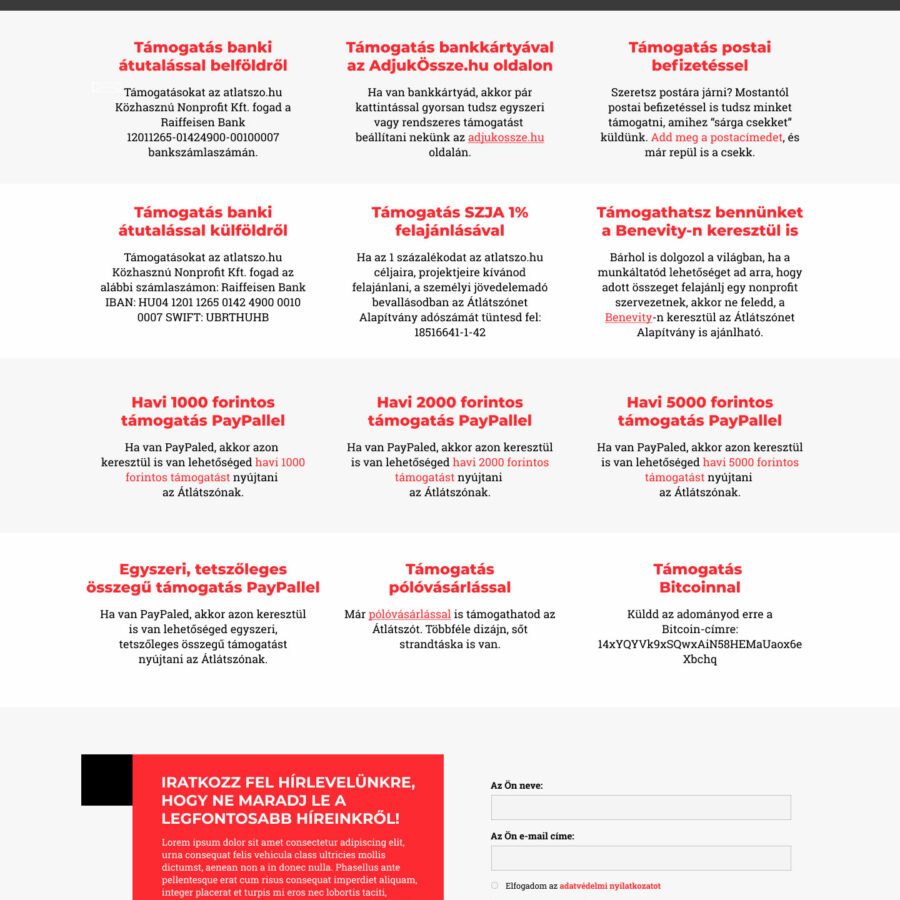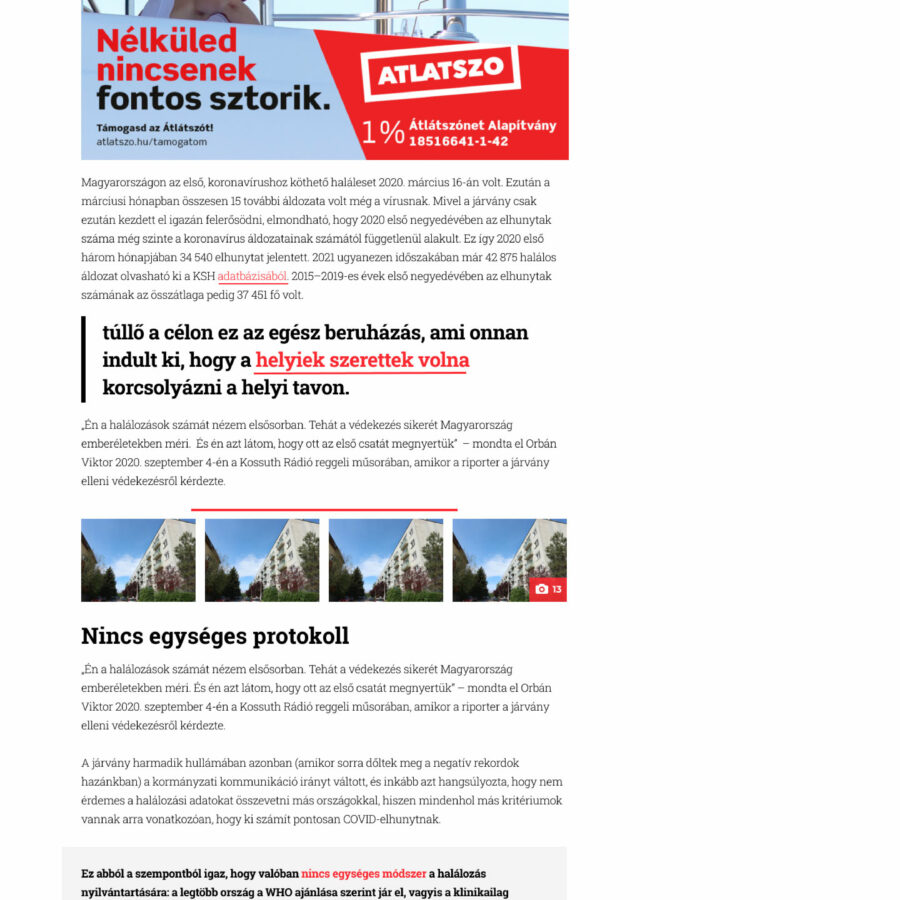My cooperation with Átlátszó began back in 2016, when the agency at the time asked me to build the new webdesign and functions prepared to WordPress. It was not about creating a simple website with a few extra functions, because the technical part of the infrastructure and the background had to be understood as well. In 2016, it still meant a lot of complications because of my knowledge at that time was even thinner in this area.
Atlatszo.hu turned 10 this year. The editor-in-chief contacted me with the question, would I be interested in redoing the design? I said yes and recommended Fecó Tóth to create the webdesign, who gladly accepted on the task.
The work took about 2 months, many rounds of consultation and design adjustment were needed to put everything together. This was not a simple WordPress theme change, because I have to handle the deprecated shortcodes and function in more than 2500 articles. Over the course of 5 years, many plugins have been deprecated, therefore I have replaced them with custom development.
With this work, it became clear once again how much a developer needs to understand in order to successfully complete such a project. Some example:
- HTML, CSS, Javascript: This was needed for the sitebuild
- SQL: To manage the large number of posts and categories and to implement new functions, the appropriate database queries were required, which saved a lot of time for the client and myself
- PHP: Obviously needed for WordPress, but also for a lot of things like parsing XML feeds and various functions and writing SQL queries
- Linux (Ubuntu), server management and commands (e.g. SSH, rsync, etc.): Due to the server’s several security guidelines, it was necessary to understand its operation and follow the rules of safe operation. In order to create the test environment, the entire website had to be saved together with the database. There is no FTP here, due to the specially designed multi-step operation, I saved the data via SSH and rsync. There is such an amount of data and files on the server that it can only be done efficiently and conveniently in a Unix-based operating system.





